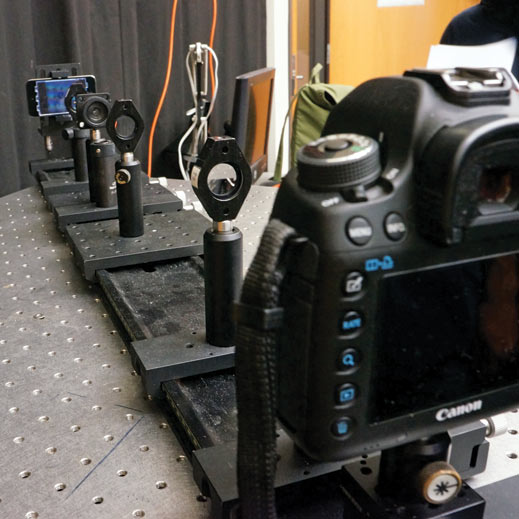See Your Phone Sans Spectacles
As anyone who needs reading glasses can attest, having to find them and put them on every time you look at your smartphone can be a major nuisance. But researchers at the MIT Media Lab and the University of California, Berkeley, have developed a new display technology that corrects for vision defects—no glasses (or contact lenses) required. It could be used in phones, electronic readers, and dashboard-mounted GPS displays.

“The first spectacles were invented in the 13th century,” says Gordon Wetzstein, a research scientist at the Media Lab and one of the display’s creators. “We have a different solution that basically puts the glasses on the display.”
The display—which Wetzstein designed with Ramesh Raskar, director of the Media Lab’s Camera Culture group, and two Berkeley researchers—is a variation on a glasses-free 3-D technology also developed by the Camera Culture group. But where the 3-D display projects slightly different images to the viewer’s left and right eyes, the vision-correcting display projects slightly different images to different parts of the viewer’s pupil.
A vision defect is a mismatch between the eye’s focal distance—the range at which it can bring objects into focus—and the distance of the object it’s focusing on. Essentially, the new display simulates an image at the correct focal distance—somewhere between the display and the viewer’s eye.
Light from a display arrives at the left and right edges of the viewer’s pupil at slightly different angles. For a virtual pixel hovering above the screen, those angles are sharper than they would be for a real pixel on the screen. Reproducing those angles—without actually moving the display closer to the viewer’s eye—requires two display pixels. Since simulating a virtual pixel requires multiple real pixels, it would, ordinarily, drastically reduce the display’s resolution.
But there is, in fact, a great deal of redundancy between the images required to simulate different viewing angles. The Camera Culture group’s 3-D display exploited that redundancy, allowing individual screen pixels to participate simultaneously in the projection of different images. The MIT and Berkeley researchers adapted that technology to the problem of vision correction, so the new display incurs only a modest loss in resolution.
Future versions of the device could incorporate another Camera Culture project that diagnoses vision defects, allowing it to determine the user’s prescription and automatically correct for it.
Keep Reading
Most Popular
Large language models can do jaw-dropping things. But nobody knows exactly why.
And that's a problem. Figuring it out is one of the biggest scientific puzzles of our time and a crucial step towards controlling more powerful future models.
How scientists traced a mysterious covid case back to six toilets
When wastewater surveillance turns into a hunt for a single infected individual, the ethics get tricky.
The problem with plug-in hybrids? Their drivers.
Plug-in hybrids are often sold as a transition to EVs, but new data from Europe shows we’re still underestimating the emissions they produce.
Stay connected
Get the latest updates from
MIT Technology Review
Discover special offers, top stories, upcoming events, and more.